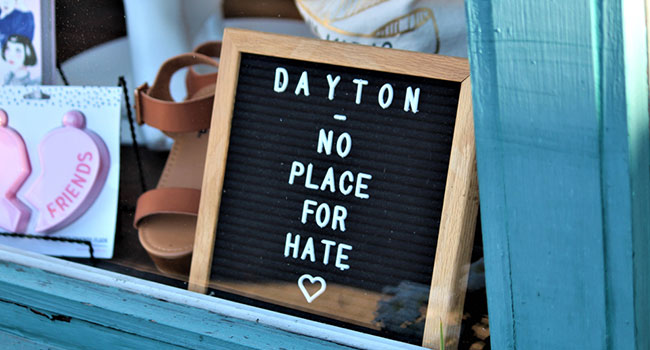
Dayton Schools Grapple With How to Handle Expelled Students, Threats in Wake of Mass Shooting
Expelled students typically return to their original schools within 80 days according to Ohio law. How should administrators, parents and students handle the returned students?
- By Haley Samsel
- August 27, 2019
After a mass shooter with a troubled school disciplinary history took the lives of nine people in a Dayton entertainment district, local schools and law enforcement authorities are dealing with difficult choices regarding how to handle expelled students and threats to their facilities.
In Ohio, expelled students typically return to their original school after 80 days, The Dayton Daily News reported. That means that the school which dealt with the student must acclimate them back to their environment, even after students make threats against officials or other students.
Chris Piper, the superintendent of schools in Troy, a suburb of Dayton, told the newspaper that his district uses a threat assessment protocol involving the input of administrators, teachers familiar with the student, mental health officials and local law enforcement.
“When they return, they’re required to sit down with a school administrator and walk through whatever the threat was,” Piper said. “And there’s a plan put together by that team to help the student transition back to school. It’s up to us to support and monitor that student moving forward.”
Ohio law dictates that schools limit expulsions to a semester or a year at most, making permanent exclusions extremely rare and requiring state approval. Piper called it an “emotional question” of how to handle incidents in which the student poses a potential danger to themselves or others.
“Anytime someone sends their kids to school, or to anywhere, a bus stop or a movie, there’s some degree of trust that has to go into it,” Piper said. “The better we can do to communicate proactively and reactively with parents, the more people are going to trust. It’s a big responsibility, and one we take seriously. There’s no easy answer.”
The Warren County prosecutor, David Fornshell, said his office has brought criminal charges against 78 people for school threats in 3.5 years. The superintendent of schools in Lebanon, another suburb, urged students and parents that the issue is no laughing matter and often ends in suspension, if not expulsion.
“Students need to realize that there is no such thing anymore as an empty threat; no jokes, no kidding around, no ‘I didn’t mean it,’ ” said Todd Yohey. ”Parents need to have serious conversations with their children about the consequences of making threats.”
Erich Merkle, a former president of the Ohio School Psychologists Association, told the Daily News that there is a formidable body of research questioning if expelling students does anything to help the student or resolve their issues. He encouraged districts to put programs in place that give the student the chance to “acquire new skills and hopefully shift behavior.”
In addition, schools should foster a positive culture that promotes trust between students, teachers, administrators and parents, he said. This can help resolve student issues before they transform into threats or negative actions.
“What parents and teachers can do, first and foremost, is reinforce the very positive sense of school community,” Merkle said. “We want to have positive relationships between adults and students. Those are the foundation of safe and successful learning environment.”